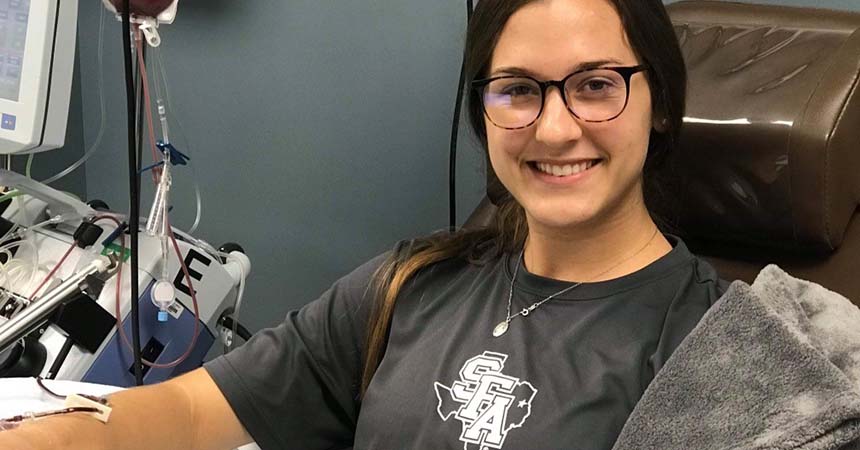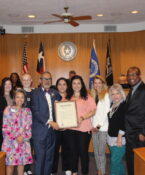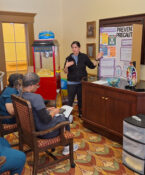Saving lives is in TCOM student’s blood
A desire to save lives runs in Ann Hollas’ blood. Her father is a family physician, her brother attends medical school, she began her first year at TCOM in July – and what’s in her blood that is saving a life now.
The Texas College of Osteopathic Medicine student learned she was a bone marrow match with a six-year-old boy battling leukemia. Hollas, who signed up with “Be The Match” as a college freshman, did not hesitate and quickly donated her peripheral blood stem cells in May.
“I was mostly excited,” Hollas said. “I really remembered from the first phone call is that I may have an opportunity to help save a six-year old’s life. None of the negative side effects or uncertainties even registered with me in that moment.”
Hollas was a phenomenal athlete at Stephen F. Austin, where she was a two-time Academic All-American and three-time Southland Conference All-Academic selection. It was volunteer work at SFA that acquainted her with the “Be The Match” program.
“Each year, student-athletes at SFA were in charge of a “Be The Match” tent on campus for a week,” Hollas said. “I volunteered to work it and signed up myself in the process. A simple cheek swab for a chance to save a life… who could beat that?”
The National Marrow Donor Program has over 16 million individuals registered from around the world. A seemingly large number, but the statistics say only 1 out of every 430 individuals in the registry will ever donate, and the need for more donors is growing.
Blood cancers cause 68,000 deaths a year, and an estimated 175,000 people will be diagnosed with a blood cancer each year. Hollas was always hopeful the call would come, and in May it did.
“Of course I had no idea that I would be able to help someone in this way, but I am blessed that I was able to contribute and now I can even be an advocate for “Be The Match” she said. “I’m striving for a career in medicine for this reason exactly, to impact lives in a positive manner and to inspire others to do the same. I want there to not only be change in this world, but I want to be a part of it, and I want to help others want to be a part of it, too.”
For privacy reasons, Hollas knows that her marrow went to a boy with Leukemia who lives in the United States. A possibly meeting with the family and little boy could happen after nine months, but he’s always on her mind.
“On the day of my donation, I gave the staff a card to mail to the boy,” Hollas said. “I wished him luck and told him I’d be praying for him and his family, which I continue to do every day.”
To learn more about how you can register visit www.bethematch.org




![Uyen Sa Nguyen Scaled[58]](https://www.unthsc.edu/newsroom/wp-content/uploads/sites/16/Uyen-Sa-Nguyen-scaled58-145x175.jpg)

Social media